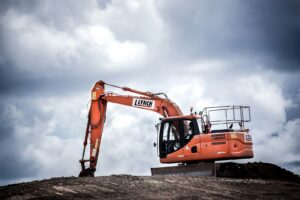Interview: Are MMC the future of social housing?
NewStart speaks to John Bellamy, the newly appointed Category Manager for Construction at Procurement for Housing, about the benefits of Modern Methods of Construction (MMC) and what is stopping social housing providers from using them.
As the construction industry continues to be plagued by pandemic disruptions and supply shortages, housebuilders are looking for new ways to ensure that their practices are sustainable and resilient.
In comes MMC – a building movement that John Bellamy thinks could transform the future of social housing.
MMC embrace a range of offsite manufacturing and onsite techniques that provide alternatives to traditional house building. This ranges from whole homes being constructed in factories, through to using innovative techniques onsite, according to the NHBC.
As the housing crisis becomes a more and more pressing issue, John says that the benefits of MMC are clear.
Although an exact consensus has not been reached, he reports that using MMC to build a house can be anything from 10 to 60% faster than traditional building. Given that the government set an ambitious target in 2017 of increasing the housing stock to 300,000 units a year in England by the mid-2020s, innovative solutions are needed to speed up development.
The challenge of accelerating housebuilding can be addressed by finding more uniform building approaches, says John.
Using MMC cuts down the design phase of developing by using uniform processes, so it does not require as much architect involvement, and there is also less need for other specialist tradespeople such as plumbers during construction.
John also argues that it makes housebuilding cheaper and more predictable, securing the labour force by providing employment during times of the year when traditional builders might find themselves out of work.

Covid-19 and changing attitudes
The pandemic has forced housebuilders and providers to reflect on how they deliver housing, and as a result attitudes towards MMC are starting to shift.
‘There’s an awful lot of reflection in the housing sector. What could we have done differently, should we have had less reliance [on traditional methods of construction] and a little bit more reliance on other methods, i.e. MMC? Is that more resilient? The answer is yes,’ explains John.
‘During the pandemic you have issues with the supply of materials, which is obviously an issue across the board. But the way that manufacturing works where construction doesn’t is there is an awful lot of stock kept on hand, you are procuring materials in advance because you’ve got that production on schedule, so it becomes less of an issue. It becomes a little bit more predictable and becomes a little bit more manageable from that point of view as you are buying in bulk.
‘And from a labour force point of view, there is not lots of different organisations landing on site, so you are not having to orchestrate that and all the complexities that come with Covid-19 and pandemics – it’s one workforce for the predominant phase of the build and it’s done within that one organisation’s premises. It is much more simplistic to manage, it’s a bit like a football team being in their bubble. On a manufacturing line, they are all working together day in day out, so as long as they get that process nailed down and they have got testing processes in place the show can go on.’
The pandemic has coincided and heightened supply chain issues, that stem from a range of factors including HGV driver shortages and issues with production of raw materials in different parts of the world.
Although these issues are not unique to the housing sector, social housing is ‘suffering the brunt of it’, according to John. As with adapting to social distancing and lockdown measures, achieving predictability within housebuilding is key to reducing the impact of the supply chain issues, and keeping completions up during times of uncertainty.

Building for a better future
As well as making construction cheaper and quicker, MMC can significantly reduce the environmental impact of building.
Using MMC significantly reduces the waste from building homes, with traditional construction wasting around 20% of raw materials while offsite construction wastes less than 1% of the total unused materials, according to Savills.
A Waste & Resources Action Programme (WRAP) study found that there is 83% less site traffic for offsite construction compared to onsite developments, which has a positive impact on the environment and air quality.
Once built, Keepmoat Homes estimates that buildings that use MMC take 20-30% less energy to heat than traditional houses.
John explains: ‘MMC is an important vehicle for helping to achieve net zero. Obviously, there are other things that can be done that are more traditional in terms of retrofitting and so forth – you can’t just always throw a new home up – but when you do, that carbon neutrality and lack of embedded carbon [that you get from MMC] is just worlds apart from traditional building.’
Obstacles to making MMC mainstream
Despite obvious benefits of adopting MMC in social housing delivery, local authorities and housing associations are still hesitant to change how they build, according to John.
‘We seem to be in almost this chicken or the egg type situation, in that the more confidence that the manufacturers have that their product is wanted, needed and required by the social housing sector, the more they get confident in investing and holding more stock and opening larger factories and employing more staff. You almost need that to happen so that all the housing associations and all the local councils can all benefit collectively from a more secure, robust supply base for houses.
‘Whereas if there is a lack of confidence for any reason, or that confidence is building, until the sector realizes that there is a solution there and really starts to grasp it and drive forward with it – without it having to come from government intervention or quotas – you won’t see the true benefit and potential.
‘I think everybody can see that there’s a solution there, I think it makes perfect sense and you can see that from an outside perspective looking in that it seems a logical way to address some of the challenges with supply chain issues and so on. But I think we are still in that stage where the blinkers are on, but the turn hasn’t been made yet. When it does, I think it’ll be huge, and I think you’ll see some of these facilities just pop up, they’ll buy up land to build new production lines and so on. Once manufacturers get that confidence in the order book, there’s no reason why it won’t – it’s no different from manufacturing – if there’s demand there it will come.’
Photo by Alexander Andrews

















